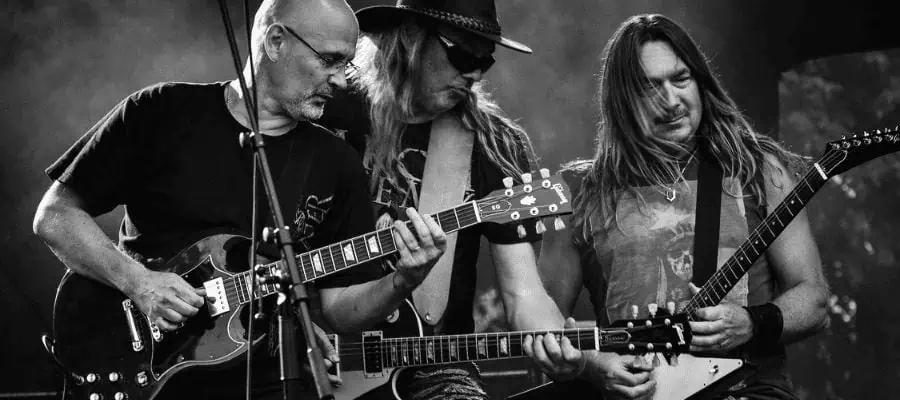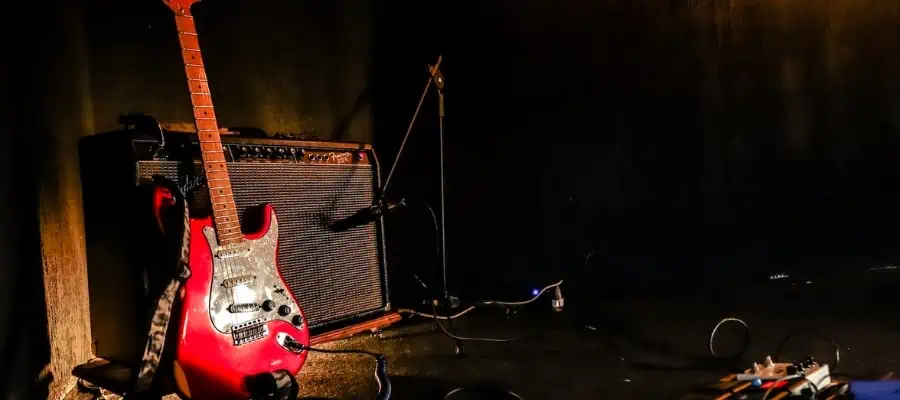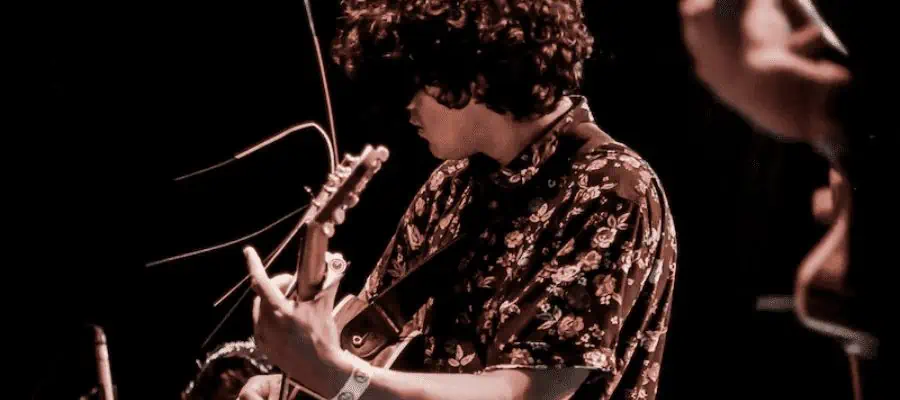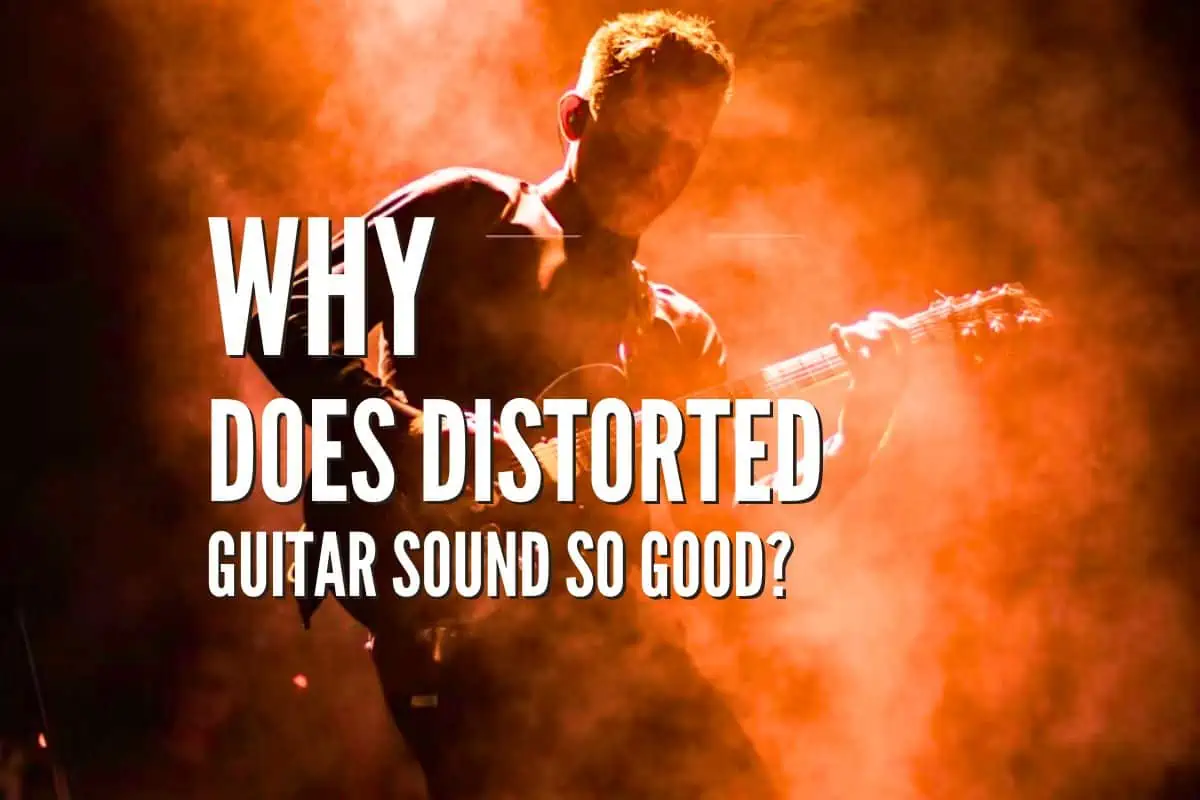The gritty growl of a distorted guitar strikes a chord in the hearts of many music lovers. It goes beyond mere noise; distortion adds texture, enhances sustain, and introduces a palette of harmonic overtones that appeal to our primal senses. It turns the guitar into more than just an instrument—it becomes a voice with a spectrum of emotions ranging from a soft snarl to an all-out roar.
This love affair with distortion isn’t new; it’s been a defining element in the evolution of music genres like rock and metal. Embracing distortion allows guitarists to express power and passion, while the thickened sound supports riff-driven songs, allowing rhythm playing to take center stage.
The magic lies in how it alters the sound wave, clipping the peaks and creating a complex series of frequencies that our ears interpret as aggressive and compelling. Distortion doesn’t just change the sound; it morphs how you interact with your guitar. The resulting sustain and overtones give new life to each note, making them sing in an almost visceral way. When you strike a chord, it’s not just heard but felt, leaving a lasting impression that’s as much about the vibration as it is about the sound.
The Allure of Distortion

Distorted guitar sounds resonate with you because they tap into a mix of cultural history and psychological appeal. They bring a distinct intensity and richness to music that often reflects the emotions behind the songs.
Historical Origins
Distortion was initially born out of a desire for more volume, not necessarily for its tonal quality. Back when guitarists like Muddy Waters and Chuck Berry were shaping the future of music, they found that pushing their equipment beyond its intended limits created a gritty, aggressive sound.
This discovery was pivotal in developing genres like rock and roll and, later, heavy metal. Early rock acts stumbled upon this sound through broken speakers. They realized it added a compelling layer to their music, which helped guitars stand out in an entire band arrangement. This accidental experiment became a foundational sound for many iconic riffs you probably can’t imagine without that growl and bite.
Psychology Behind the Appeal
Why are you drawn to the sound of distortion? It boils down to a few factors. Psychologically, distortion adds complexity to the raw waveforms of a guitar’s output, producing an array of overtones that can excite the brain.
The richness and sustain make the sound seem powerful and dynamic, which might explain why it’s so prevalent in music meant to evoke strong emotions like excitement, passion, or aggression. It’s not just noise; it’s calculated chaos communicating in ways clean tones don’t always manage. These sonic variations give it a human-like quality, full of imperfections, which can make the music you’re listening to feel more personal and relatable.
Technical Aspects of Distorted Guitar

When you plug into that tangy, growling distortion, you’re tapping into a complex interplay between your gear and the physics of sound waves. This section unpacks how your equipment choices interlace with those waves to create that iconic sound that feels as good as it rocks.
Gear and Equipment
The journey to that perfect distorted tone starts with your gear. First up is your guitar, which might have humbucker pickups for a richer, fuller distortion or single coils for a brighter bite. Then come pedals like fuzz, overdrive, and distortion boxes that push the signal past its clean threshold. And remember the amplifier, ready to add its color to your sound with its circuitry.
Sound Wave Characteristics
Getting into the nitty-gritty, those gritty sounds arise from specific changes in your guitar’s sound waves. Normal playing produces waves that are smooth and symmetrical. Distortion cranks them into more jagged, clipped shapes. This clipping happens when the signal exceeds an amp’s maximum capacity, resulting in a compression of peaks and troughs of the sound wave, which, in sound terms, translates to satisfying crunch and sustain.
- Clipping: Squashes the waves, creating that signature crunch.
- Harmonics: Introduces complex overtones that enrich the sound.
- Sustain: Let notes ring out longer.
Different distorted guitar effects also have different sonic characteristics. First, there is the overdrive effect, which is milder and more vanilla kind of distortion. It is often used in genres like blues and classic rock. If you look at overdrive soundwaves, they have triangular-like shapes, while clean tones have more circular soundwave shapes.
Then comes the distortion effect, which is the extreme range of the overdrive effect. It has more grit, saturation, and sustain. The soundwaves of distortion are somewhere between triangular and square-like shapes. Distortion is commonly used in hard rock and metal tones.
Finally, there is the fuzz effect, which is actually extreme distortion. It clips the soundwaves in a unique, full, square-like form. It is the most extreme distorted guitar sound and is commonly used in many genres, from funk to rock to metal.
All distorted guitar effects have different harmonic content of notes, adding and/or emphasizing different harmonics of the fundamental tone.
Influence and Legacy

Distorted guitar has been a defining element in shaping modern music’s sound and cultural aesthetic. This powerful tool brought about new genres and gave rise to iconic performances that have left an indelible mark on the music industry.
Impact on Music Genres
- Rock: Distortion became the roaring voice of rock, embodying its rebellious spirit.
- Metal: Gave birth to the heavy metal genre, where distortion is as essential as the guitar.
- Punk: Amplified the raw, unpolished sound that punk is renowned for.
- Grunge: Distortion added to the gritty and angsty atmosphere characteristic of grunge music.
Few Iconic Distorted Guitar Moments
- Rolling Stones – “I Can’t Get No Satisfaction” (1965): When Keith Richards used the fuzz effect, he changed how rock guitarists approach their tones.
- Jimi Hendrix – “Star-Spangled Banner” at Woodstock (1969): A transformative moment where Hendrix’s use of distortion made a powerful cultural and musical statement.
- Led Zeppelin – “Whole Lotta Love” (1969): This song’s revolutionary guitar riff is a milestone in using heavy distortion.
Conclusion
Distorted guitar captures your ear with its raw power and energy. Beyond technical effects and pedals, the emotional punch it packs resonates with so many. That growl and grit it adds to music often symbolizes rebellion or evokes strong emotions, carving out iconic moments in tracks that stick with you.
- The Emotional Impact: Distorted guitar strings tug at your emotions.
- Unique Sounds: Every pedal and tweak creates a new sonic experience.
- Historic Significance: It’s rooted in the birth and growth of entire music genres.
It’s not about noise but the artful use of sonic texture. Ultimately, it’s not just a sound but a voice expressing what words cannot.
If you found this article useful, you may want to save this pin below to your Guitar board.

Recent Posts
Some guitarists insist on buying an expensive amplifier with their electric guitar. They assume that this is a must for every type of guitarist out there. However, in some situations, this isn’t...
Top 50 Free Realistic Guitar VST Plugins With Sound Examples
As technology has rapidly advanced in the recent decade, computers are stealing more and more roles from physical musical instruments and accessories. Nowadays, you do not need expensive amps,...

